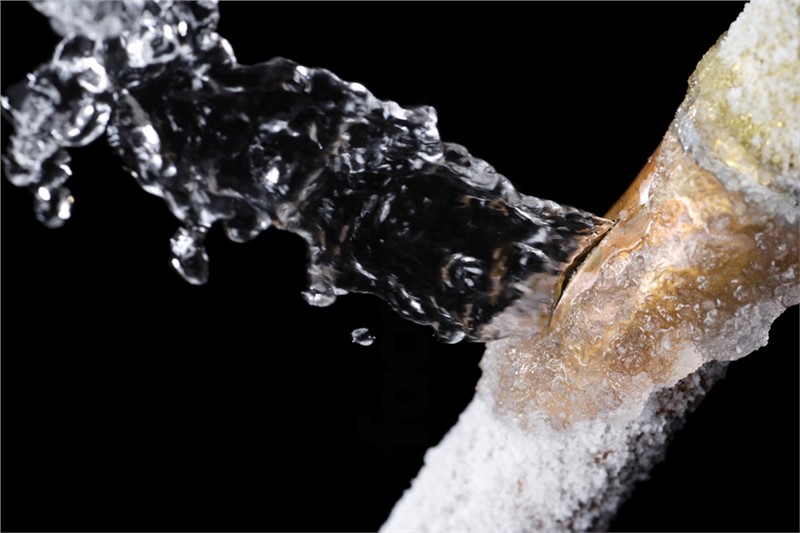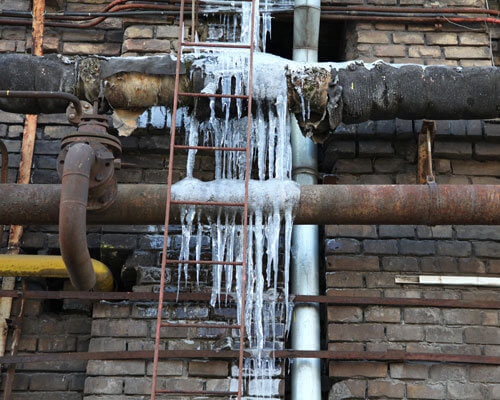Tips for Thawing a Frozen AC Pipe - Restoring Normal Functionality
Tips for Thawing a Frozen AC Pipe - Restoring Normal Functionality
Blog Article
How do you actually feel in relation to Have a Frozen AC Line? Here’s How to Fix It?

Intro
Discovering that your air conditioning pipe is frozen can be worrying, particularly during hot summer months when you rely on your a/c unit the most. Recognizing what to do in such a scenario is critical to stop additional damage to your cooling system and guarantee your convenience inside your home.
Comprehending the Causes
Several factors can add to the cold of an a/c pipe. Understanding these reasons can assist you deal with the issue properly.
Lack of Airflow
One usual root cause of a frozen AC pipeline is inadequate air flow. When the airflow over the evaporator coil is limited, it can trigger the coil to drop below freezing temperature level, causing ice development on the pipeline.
Reduced Refrigerant Levels
Inadequate cooling agent degrees in your air conditioning system can also lead to a frozen pipeline. Reduced refrigerant degrees can trigger the pressure in the system to go down, leading to the cold of wetness on the evaporator coil.
Winter Conditions
In chillier climates, freezing temperature levels outside can contribute to the cold of air conditioning pipelines. If your a/c unit is not appropriately insulated or if there are leakages in the ductwork, cold air can penetrate the system, triggering the pipeline to freeze.
Dirty Air Filters
Unclean or stopped up air filters can limit air flow in your air conditioner system, resulting in numerous problems, including a frozen pipeline. It's vital to change or clean your air filterings system consistently to make sure appropriate airflow and prevent ice build-up.
Indicators of a Frozen A/c Pipe
Acknowledging the indicators of an icy air conditioning pipeline is important for prompt activity.
Lowered Airflow
If you discover a substantial decline in airflow from your vents, it might indicate an icy pipeline.
Ice Buildup on the Pipe
Noticeable ice buildup on the refrigerant line or the evaporator coil is a clear indicator of an icy air conditioner pipe.
Unusual Sounds from the Unit
Uncommon sounds, such as hissing or gurgling, originating from your AC unit can indicate that there's ice existing on the pipeline.
Immediate Actions to Take
When confronted with an icy AC pipe, it's essential to act rapidly to avoid more damages to your cooling system.
Shutting off the a/c
The first step is to shut off your air conditioning unit to avoid the system from running and exacerbating the problem.
Looking for Blockages
Check the location around the interior device for any kind of blockages that might be blocking airflow, such as furnishings or drapes.
Thawing the Pipe
You can utilize mild methods like placing towels soaked in warm water around the frozen pipeline to aid thaw it slowly.
Preventive Measures
Taking preventive measures can help avoid future occurrences of an icy air conditioner pipeline.
Normal Maintenance Checks
Arrange routine maintenance consult a professional HVAC specialist to guarantee that your AC system is running efficiently.
Transforming Air Filters
Regularly change or cleanse your air filters to avoid air flow limitations and maintain optimal efficiency.
Shielding Exposed Pipes
If your a/c pipes are exposed to cool temperature levels, think about protecting them to prevent cold throughout winter season.
Seeking Professional Help
If DIY approaches stop working to deal with the issue or if you're unclear regarding exactly how to proceed, it's ideal to look for support from a certified HVAC service technician.
When DIY Methods Fail
If your attempts to thaw the pipeline or address other issues are not successful, it's time to call an expert.
Significance of Hiring a Professional HVAC Technician
A qualified HVAC service technician has the competence and tools needed to diagnose and fix issues with your air conditioner system safely and efficiently.
Verdict
Taking care of a frozen a/c pipe can be a discouraging experience, but recognizing how to react can help decrease damage and bring back comfort to your home. By comprehending the reasons, acknowledging the indicators, and taking prompt activity, you can effectively deal with the issue and stop future events.
Frozen AC Line: Why It Happens & What To Do About It
A frozen AC line can be a rather peculiar sight in a place like Phoenix, Arizona where nothing ever freezes. In this post, we’ll discuss what makes an air conditioner line frozen – and what you can do about it.
Dirty Air Filters
Did you know that you should be cleaning or replacing your air filters on a monthly basis? Failing to do this can result in airflow issues that, in turn, cause your evaporator coils and lines to freeze over. You’ll notice a buildup of ice on both components, although the buildup on your pipes will, of course, be more evident unless you open your air condition up to reveal the coils.
What To Do About It
Give your air filter a good cleaning if it’s reusable. If not, replace the filter outright. Next, switch your air conditioner’s fan setting on and leave it there for 2-3 hours. This will draw warm air in, helping to thaw your evaporator coil. You can also check out this article for some tips on cleaning the coils themselves if you’d like to speed the process up. Before you switch the unit back to its normal state, make sure the supply vents are completely unobstructed and free of dust or other debris.
If you keep having this issue even after replacing your filters regularly, contact a local HVAC repair company and have them inspect your evaporator coil, ductwork, and any other components that may be at fault. If you live in the Phoenix, Arizona area, give American Home Water and Air a call.
Low Refrigerant Levels/Leakage
What To Do About It
Contrary to what air conditioner “recharge” companies often tell their clients about refrigerant, it should never need to be simply refilled. You see, refrigerant runs in what experts refer to as a “closed loop.” Refrigerant really shouldn’t be leaving that loop. If it is, you’ve got a leak.
Paying someone to come and pump more refrigerant into your system (aka “recharge” it) isn’t the solution. Doing that will simply kick the can down the road. Besides, refrigerant leaks can be harmful to the environment and people in your home.
Rather, you need to take care of the leak with the help of a technician. Check out this article for some more information about dealing with air conditioners that are leaking refrigerant. Before you contact a technician, switch your thermostat to the off position. Then, switch the fan setting on and let it run for 2-3 hours so the unit can thaw.
Improper Temperature Setting
Improper temperature settings can also cause a drop in your air conditioner’s pressure. What many people don’t realize is that air conditioners are actually designed to run when temperatures have fallen above roughly 60 degrees Fahrenheit. If you run the unit when it’s cold outside, you’ll run into many issues, including frozen components.

Do you appreciate reading up on Have a Frozen AC Line? Here’s How to Fix It? Put a remark below. We will be glad to know your views about this write-up. In hopes to see you back again in the near future. If you enjoyed our page kindly don't forget to share it. We cherish reading our article about Why Is Ice On My Outside Air Conditione.
Get Quote Now Report this page